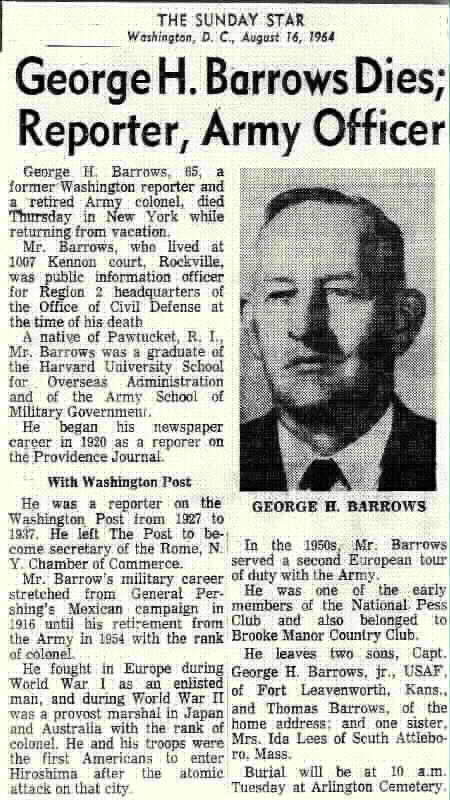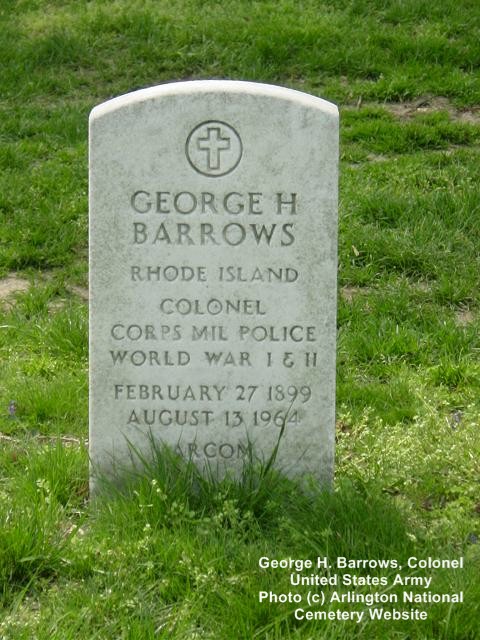Provided By Tom Barrows
Biography of Colonel George Howard Barrows
February 27, 1899 – August 13, 1964
A native of Pawtucket, Rhode Island, Colonel Barrows enlisted in the Cavalry Squadron of the Rhode Island National Guard in 1916 at age 17 and served with General Pershing’s Mexican Border Campaign.
He re-enlisted in the 26th “Yankee Division” of the United States Army in 1917, sailing for Europe in September of that year with the rank of corporal. Engagements included the Somme Front (Cambrai offensive}, Chenin des Dames, Toul Sector, Seichprey defensive, Aisne-Marne offensive, St. Mihiel Salient and the Meuse Argonne offensive. He was evacuated to a hospital at Souilly with mustard gas poisoning in November 1918 and discharged shortly after. After recovery, he re-enlisted as Sergeant; Troop A, Cavalry, Rhode Island National Guard for one year.
In 1920, Colonel Barrows began work as a reporter for the Providence (Rhode Island) Journal after writing about his experiences as a merchant seaman on a Gulf Oil tanker. Some of his features included the evacuation of the “Bonus Army” from Washington and the first inaugural of President Roosevelt.
From 1927-1937, Mr. Barrows, an early member of the National Press Club, was feature writer, radio commentator, government columnist and promotion director for the Washington Post, before being enlisted as secretary for the Rome, New York, Chamber of Commerce.
When the Japanese attacked Pearl Harbor, Mr. Barrows was among the first to be called to active duty as a reserve Captain in the Army, and was selected as a member of the original “Mission X” planned to supply or evacuate American troops from the Philippines. During the remainder of the war, the now Colonel Barrows served as a provost marshal in Australia, New Guinea, the Philippines, Okinawa and Japan. Colonel Barrows and his troops were the first Americans to enter Hiroshima after the atomic attack on that city.
Colonel Barrows was recalled to active duty during the period of the Berlin airlift and later served with the office of the Provost Marshall General at Washington and as a member of Admiral Blandy’s joint Army, Navy and Air Force Maneuver Command Staff before being sent to Europe as Provost Marshall of the U.S. Constabulary in Germany and later, France.
Colonel Barrows finished over twenty years of service as the Regular Army advisor to the Pennsylvania National Guard before retiring in 1956.
From 1956 until the time of his death, Colonel Barrows was public information officer for Region 2 headquarters of the Office of Civil Defense in Washington, D.C., adding the Cuban missile crisis to a long list of campaigns.
Colonel Barrows died August 13, 1964 and is buried in Arlington National Cemetery.
Michael Robert Patterson was born in Arlington and is the son of a former officer of the US Army. So it was no wonder that sooner or later his interests drew him to American history and especially to American military history. Many of his articles can be found on renowned portals like the New York Times, Washingtonpost or Wikipedia.
Reviewed by: Michael Howard


